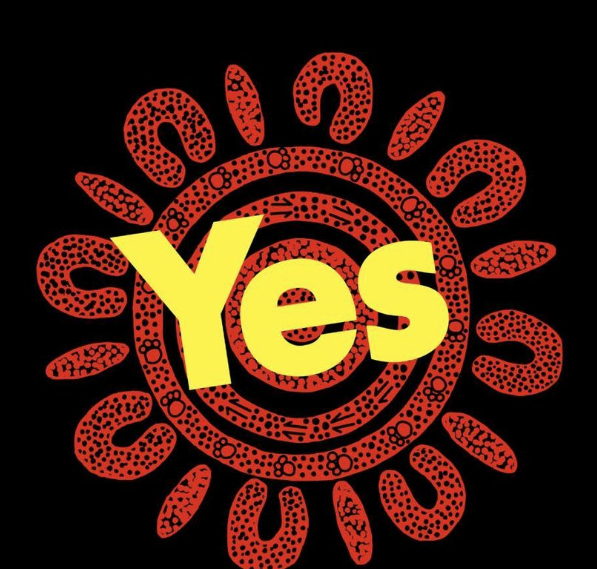In the lead up to the 2007 election, prime minister John Howard announced that if he was re-elected, he would bring forward a referendum on constitutional recognition of Indigenous Australians within 18 months. The opposition leader, Kevin Rudd, responded in kind.
In October 2007, Yolngu leader Galarrwuy Yunupingu graciously accepted this challenge. In a speech at the University of Melbourne, he asked for more than just symbolic recognition. He argued that constitutional reform should advance Indigenous rights and address Indigenous disadvantage. He called on the prime minister to bring other Australians on the journey.
Following Galarrwuy Yunupingu, Indigenous Australians have generously supported this idea and made compromises to find a path forward for a constitutional referendum.
Sixteen years later, we are on the cusp of a referendum vote. All prime ministers since Howard have engaged with this idea.
A No vote later this year for the constitutional enshrinement puts at risk 16 years of inquiry, consultation and negotiation.
It puts at risk the good faith Indigenous Australians have invested in political leaders, from Howard to Albanese, to find a proposal that other Australians can support. It also risks betraying the spirit of trust that democracies need to thrive.
An Indigenous Voice to parliament provides a way to improve policy and the accountability of future governments.
The Morrison government commissioned a detailed design of the potential national and regional structures for the Voice to parliament. Professors Tom Calma and Marcia Langton led a co-design process that brought together Indigenous and non-Indigenous leaders from across the political spectrum with senior public servants.
Peter Dutton continues to ask for details. Why does he not promote and advocate the model the Morrison government designed?
The co-design process engaged 9400 Indigenous and non-Indigenous peoples and organisations, and the final report goes to 270 pages. It recommends establishing a national structure that initiates advice and responds to requests from the government and all members of the Australian parliament.
I am an Indigenous, palawa, doctor and academic. Over my professional career, I have worked on Indigenous policy from within and outside of government. I worked for the Australian government on the refresh of the Close the Gap national agreement. Engaging with Indigenous Australians who delivered services on the ground significantly improved the design of this agreement.
The Australian government makes laws, policies and decisions that directly impact the lives of Indigenous Australians. My experience shows that outcomes are improved when governments work in partnership with Indigenous peoples. However, governments do not consistently seek advice from Indigenous people. Indigenous advisory bodies come and go, sometimes seemingly at a political whim.
The recent heartbreaking tragedy in Alice Springs could have been avoided if the Northern Territory or Australian government had responded in a timely way to concerns raised by community leaders and experts before the end of alcohol restrictions in July last year. They warned governments of the rise in harm to the local community.
A Voice to parliament is needed to end top-down government decision-making. Enshrining this Voice to parliament in the Constitution makes future governments and parliaments accountable to listening to the advice of Indigenous Australians, rather than closing it down at their whim.
The Voice proposal developed for the Morrison government recommends that advice would be provided transparently to all members of parliament with discretion for informal discussions. Advice would present a clear position where possible, with flexibility to reflect diverse or dissenting views. The national body would seek advice, where needed, at a local or regional level.
Transparency is key for accountability. It puts an end to advice that never sees the light of day. Governments can reject the Indigenous Voice to parliament’s advice. But they would be pressured to give reasons.
Given the design work on the Voice to parliament, it is surprising that Peter Dutton continues to ask for details. Why does he not promote and advocate the model the Morrison government designed?
Ultimately, the details on the Voice can only be settled by the parliament. That is the basis of the referendum proposal.
From John Howard’s commitment in 2007 until the election of the Albanese government, the Gillard, Abbott, Turnbull and Morrison governments collectively convened an expert panel, two parliamentary inquiries, a Referendum Council and the co-design process for the Voice to parliament. For 16 years, Indigenous Australians have trusted government to make good on the promise of constitutional reform.
Indigenous leaders have made significant compromises along the way. They put aside their ambition for constitutional reform to strengthen Indigenous rights. It became apparent early on that this would never win conservative support. The current proposed wording has the support of conservative constitutional experts.
It is up to Australian political leaders across the spectrum to now engage with the forthcoming referendum, and the generosity and goodwill that Indigenous leaders have shown them.
Democracies such as Australia work because most citizens trust government. Although you might expect that Indigenous people have less trust of government.
A No vote puts at risk this trust. It puts at risk the end of top-down decision-making. It puts at risk 16 years of work.
Ian Anderson is palawa & Deputy Vice Chancellor (Academic) for the University of Tasmania. The views expressed in this article are his own.
First published in Australian Financial Review on 7 February 2023
